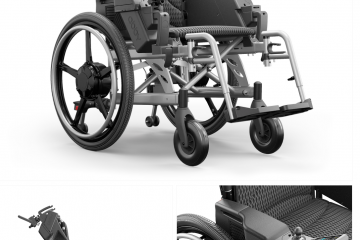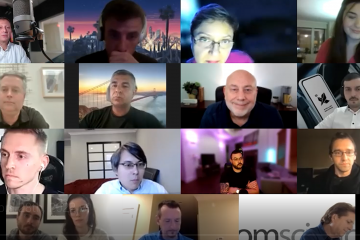Effective Customer Interaction – A Guideline for Success
Customer growth is traditionally linked to the validation of your business concept and hypothesis. The method revolved around conversing with your clients. This process underscores the importance of carrying out customer interactions effectively.
The critical challenge related to customer chats is ensuring that you elicit worthwhile insights from it. This involves possessing skills to formulate queries and understanding precisely which inquiries to pose.
The Rules
1. Avoid Selling
The distinction between conducting a sales presentation and a customer interview might seem murky initially. However, the objective of conversing with your consumers is primarily to comprehend their needs better, ultimately enabling you to cater more effectively to their requirements.
The key to differentiating a customer interview from a product pitch lies in the outcome of the interaction – a product pitch ends with soliciting financial commitment, an interview does not.
For instance, you might pose a hypothetical question like “Imagine a fantastic product that solves this particularly annoying difficulty. Would you be willing to purchase it?” This resembles a sales pitch, it feels like you’re making an effort to convince them to buy your invention. Operating under the assumption that you’re selling them something can cause the customer to become defensive and uncommunicative. They may, as a result, return responses that either align with what they think you want to hear, or those that help them avoid a future predicament where they’d actually have to purchase (or decline) your product.
Because of this defensive reaction, you haven’t really validated your assumptions effectively. The positive response you received might merely be the outcome of them trying to appease you.
2. Irresistible Appeal of “Cookies”
In reality, it would be rare to encounter anyone flatly refusing when asked “Would you like a cookie?”. There might be individuals who may have reservations about indulging in a cookie, but their response invariably tilts towards “yes.”
Such a query doesn’t truly furnish you with any novel insights, as it’s common knowledge that a bulk of individuals would overwhelmingly opt for a “yes”. This might create an illusion of having your presumptions substantiated, when in truth, the response to the question was inherently dictated by the lure of your proposition.
3. Single interactions can’t be deemed as comprehensive surveys
Interacting with just one customer does not qualify as a comprehensive survey. The swipe of “yes” or “no” in response to your questions is merely the viewpoint of one individual at that moment. Rather than gathering viewpoints, your objective should be to extract insights that can transform your business approach and challenge your preconceptions. To convert these interactions into a legitimate survey, you need to expand the purview of your conversations to include a multitude of customers and ensure a variation in your selection process.
Being versatile in your selection implies that you should have a fundamental comprehension of who your customers are and diligently choose representative samples from each of your customer cohorts (or segments).
4. Elicit Information Rather than Deploy It
Consider this scenario: You’re developing an anti-dandruff shampoo. An ineffective question would be, “Wouldn’t you desire a shampoo that eliminates your dandruff?” Such an inquiry is also classified as a “prompt” or “guided” question. The issue is that it already points towards the answer you want to receive. Instead, you should inquire about their hair cleaning routines to unveil their habits. You could ask, “How frequently do you shampoo your hair?” or “When do you prefer to wash your hair – morning or night?” and so on.
By framing your questions in this way, you can uncover additional issues and propose possible solutions that are centred upon the problem your product aims to solve. Interestingly, you might even realise that what you perceive as a problem is not a cause of worry to your potential customers. This understanding may lead to a necessary change in your business strategy or product.
5. Refrain From Basing Your Business on “New Year’s Resolutions”
Customer behaviour in the past generally proves a reliable indicator of their future actions. In essence, it’s unwise to expect a certain behavioural pattern just because a customer has verbalised it.
Take the regular gym-goer for instance. It’s worthwhile digging a bit deeper and asking specifics such as frequency of gym visits per week or their regular exercise routine. This allows you to determine whether their claim of regular gym attendance matches their actual behaviour, or if it’s merely a perception they hold.
Analyzing previously exhibited customer behaviours can provide invaluable insight into their future actions. Of course, there will be exceptions, but these outliers will naturally emerge during data analysis and can be accurately reported as such.
Taking this approach also helps ensure that when gathering data, you’re not simply tapping into your customers’ “ideal self” versus their “actual self”. It’s essential to realise that customers aren’t projecting a future condition or what they potentially could be/do, but rather articulating what they are presently doing. After all, the problem your business is attempting to solve is grounded in the realities of their current actions.
6. Encourage Narratives, Instead of Mere Assertions
This guideline builds on the concept of the preceding one. Encouraging your customers to narrate a tale rather than merely making a statement allows you to tap into deeper understanding of their needs and the reasoning driving their decision-making process when they seek a solution.
Instead of a generic declaration such as “I habitually visit the gym,” structure your inquiries in a way that invites them to spin a yarn about when, how, and the frequency of their gym visits. Do they prefer going solo or with a gym buddy? What actions follow their gym sessions – do they head home, catch up with friends, or dine out (breakfast or dinner)? Do they incorporate any supplements into their regimen and, if so, of what type? Such detailed responses shed light on your consumers’ behaviour, offering insights that could even shape the design of your marketing campaign.
Conclusion
Conducting customer interviews is an essential task that every entrepreneur must undertake. It is the sole avenue through which you can gain genuine insights into your consumers and validate if your good or service is providing a tangible solution. By forgoing customer conversations, you run the risk of devoting time and resources to a proposition that only caters to your needs and that nobody is willing to pay for your offerings.
These consumer interviews have a statistical dimension, necessitating well-structured questions that aid in unearthing vital information rather than corroborating your preconceived notions. This necessitates utmost caution when formulating your questionnaires and avoiding the common errors elucidated in this post.
Further, it is crucial that the founders themselves undertake this task. As the creator of the product and the team leader, you must comprehend the actual requirement to effectively relay it to your team. While you might consider outsourcing this task, doing so would rob you of the critical interaction with your clientele.
Finally, it’s essential to recall that customer interviews must be carried out with regularity. Market conditions, business climates, and consumer behaviours all change over time. Regular interviews ensure that you stay attuned to your customers’ evolving needs.



0 Comments